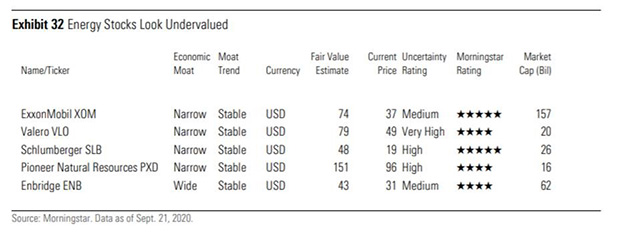
The Covid-19 pandemic has forced an unprecedented experiment with working from home. We estimate 45% of US workers were working from home at the 2020 pandemic peak. However, we shouldn't assume that working from home will be the new normal, as history presents many episodes of disruptions on the scale of Covid-19 in which things eventually returned to the old normal.
Although we expect a solid boost to work-from-home adoption thanks to the pandemic, we think most workers will return to the office. We project that 13% of US workers will be working from home full time in 2025, up from 9% in 2019. This is a faster rate of growth than working from home has seen in the last decade. We think hybrid working from home (which is preferred by more workers) will see slightly greater uptake. Working from home isn't for everyone. It requires the right occupation, permission from the employer, and ultimately choice of the worker. Only 13% of the US workforce will clear all three of these hurdles.
We expect working from home to hold the greatest appeal for workers looking to flee cities with high costs of living. As working from home enables these workers to move to areas where housing costs are much lower, we expect US housing demand to receive a solid boost. However, urban housing prices and rents aren't going to collapse, and apartment real estate investment trusts (REITs) look undevalued. Likewise, working from home doesn't move the needle for oil demand, by our analysis, and energy stocks look very cheap.
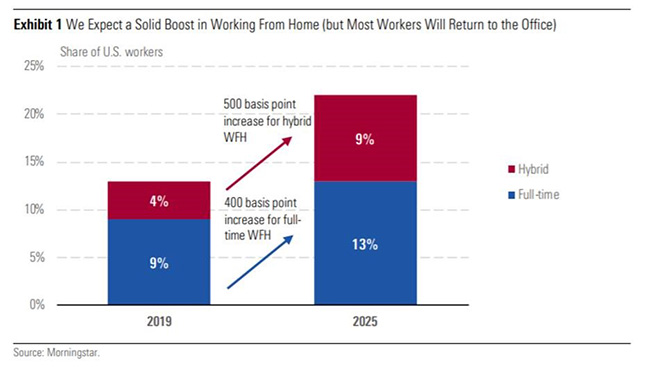
Don't Assume That Changes are Permanent
In our recent report History's Lessons for Navigating the Post-Pandemic World, we examined another episode where people drastically changed how their worked: the World War II surge in US female labour participation. Our analysis doesn't indicate the wartime surge had a large long-run impact on female labour participation.
The pandemic has caused a forced experiment in working from home that has been a success by most accounts, which will clear the way for many more workers to be permitted to work from home than before. Still, not all firms will be comfortable with working from home, and many types of employees (new hires and low performers, for example) are less likely to be permitted.
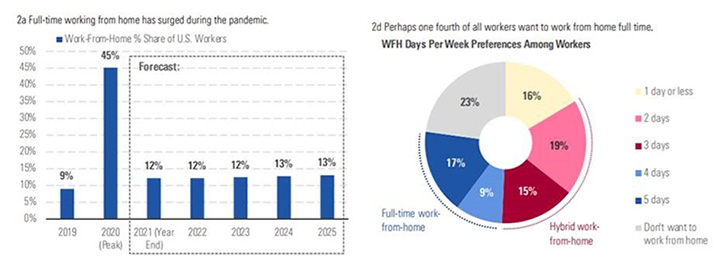
Before the Covid-19 pandemic, we estimate that about 10% of US workers were working from home most of the time. This pandemic peak share provides some indication of working from home's long-run capacity. A key caveat is that the workforce at the pandemic peak was not perfectly representative of the workforce in a normal environment.
Working from home expanded the most in industries that one would intuitively expect to have a high capability to do so due to the prevalence of computer-based work, such as finance, professional services, and information. Other industries (for example, transportation, restaurants, construction) showed little flexibility to increase working from home, for obvious reasons.
Will Working From Home be the New Normal?
While working from home has surged during the pandemic and has been (by many accounts) successful, it would be extremely rash to presume that working from home becomes the new normal based on this evidence alone
To project the long-term (our 2025 forecast) share of the US workforce that will be working from home full time, 6 we follow a three-step funnel:
1. The share of workers employed in occupations eligible to work from home. We estimate this is 40% in the US.
2. Within occupations eligible to work from home, the share of workers eligible to work from home. We estimate this is 50% in the US.
3. Among workers eligible to work from home, the share of workers who will chose to work from home. We estimate this is 65% in the US.
The benefits to employers from allowing working from home are potentially massive. The potential cost savings include reduced real estate expense, lower employee turnover, and increased ability to attract workers (which is a substitute for higher compensation).
On the other hand, there are several obstacles standing in the way of employers allowing working from home. First, not all firms will be able to develop the capability to work from home. Enabling this is not merely a product of widely accessible technologies (such as Zoom or Microsoft Teams), but also a product of organisational practices that are costly to develop and require management skill. For example, managers need to replace the practice of using "face time" to gauge employee efforts.
Probably the most important driver of employer decisions on working from home is beliefs regarding the impact on worker productivity. And a key remaining question is the extent to which collaboration will be affected in work-from-home settings. In particular, collaboration could be a key ingredient in firm innovation. Innovation is difficult to measure, which means that assessing the full impact of working from home on productivity (inclusive of innovation) will prove elusive.
Additionally, the temporary success of working from home during the pandemic may not be indicative of its long-run sustainability. Microsoft chief executive Satya Nadella has speculated that work-from-home success during the pandemic has been enabled by the burning of "social capital" that was built up in the period before remote work. This implies that eventually workers will need to return to the office in order to replenish that social capital. However, this may be an argument that permanently remote workers will need to periodically return to the office (say quarterly or monthly), rather than an argument that rules out full-time remote work entirely.
We think hybrid models in which employees go into the office just two to four days per week could see even more uptake than full-time remote work, although it's more difficult to understand the impact of increased hybrid work on the broader economy.
What is the Impact of Remote Working?
Real Estate
We have long held a bullish outlook for the US residential construction market, supported by our view that favourable supply/demand dynamics will persist over the foreseeable future. The "millennials coming of age" narrative has been and continues to be a key tenet of our demand-side thesis, and the homebuilding industry's shift away from building the McMansions that were popular before the financial crisis in favour of smaller, more affordable homes should result in an increased supply of homes that millennials can afford.
While the pandemic has wreaked havoc on the US economy, the housing market has remained resilient. Homebuilders are reporting that migration away from high-cost urban centres is one factor that has buoyed demand. With a demand environment that is stronger than most homebuilders envisioned, the pace of residential construction has returned to pre-pandemic levels, and homebuilder confidence reached a record in August.
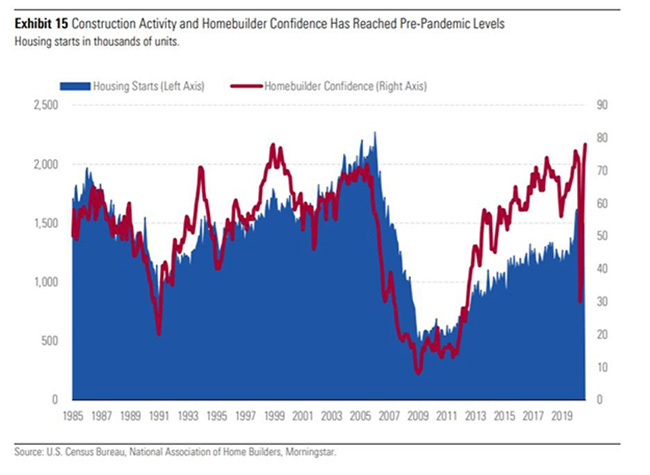
We think migration patterns of work-from-home employees could result in up to 750,000 incremental housing starts over the next five years. For now, however, we maintain our base-case forecast for housing starts to reach a sustainable run rate of over 1.4 million starts annually over the next five years, because we're concerned about lasting financial repercussions from job losses during the pandemic, which could suppress household formations. During the global financial crisis, younger adults were hit harder than any other age group, and their circumstances were slowest to improve.
How will residential real estate markets be affected in cities where a large proportion of workers go remote? Ultimately, this question depends on the price elasticity of housing demand (how much people adjust their demand for housing in a city in response to changes in prices/rents) as well as the price elasticity of housing supply (how much firms/landowners adjust the supply of housing in response to changes in prices/rents).
The key takeaway from our analysis is that for most US cities, the fall in housing prices/rents isn't likely to be significant as a result of work-from-home adoption. For high-cost cities, there could be a moderate impact, but we'd have to see a much larger uptake of working from home than we project in order to generate an all-out crash in prices and rents.
Oil Demand
Energy stocks have looked deeply undervalued since the pandemic sell-off, in our view. We think part of the market's pessimism stems from a belief that working from home will become the new normal and wipe out a wide swath of oil demand. We think this is mistaken; in our view, working from home doesn't move the needle for oil demand. We estimate the impact from reduced commuting will knock much less than 1% off total global oil demand.
We estimate that commuting accounts for just 8% of global oil demand.
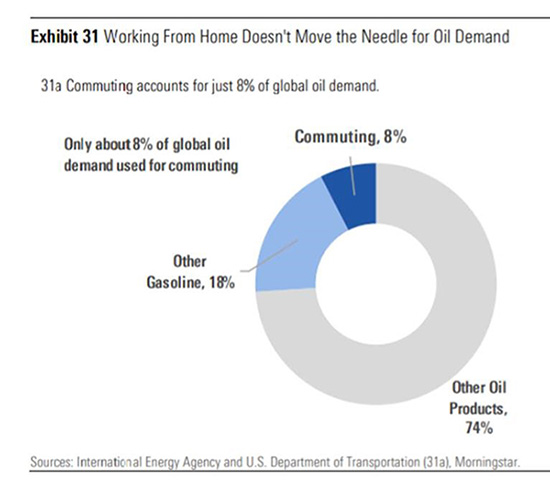
There are two main reasons we think the total impact on global oil demand will be fairly insignificant over the long run. First, the global average for work-from-home uptake will probably be a good deal lower than for the US. The average global economy is poorer than the US with a smaller white-collar office share of the workforce. Home office capabilities (including Internet quality) are on average much worse than for a US home. Second, we think many workers who start working from home are likely to switch to a more car-centric lifestyle as a result.
Currently many urban workers do without owning a car, but if they move out to the suburbs as a result of working from home, they will use cars much more for reasons other than commuting than they did in their pre-work-from-home life. With this in mind, many energy stocks look undervalued by our metrics.
